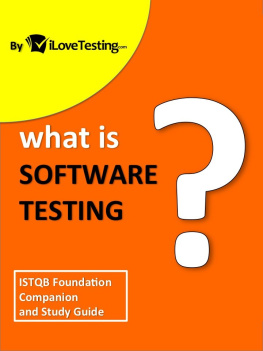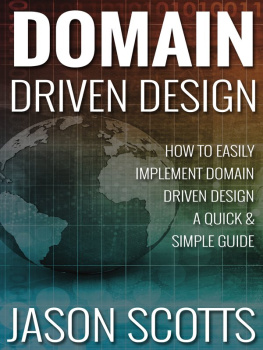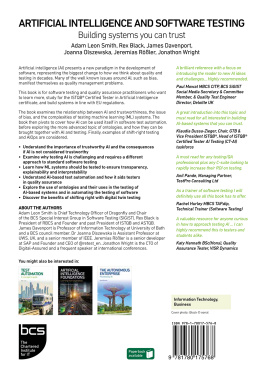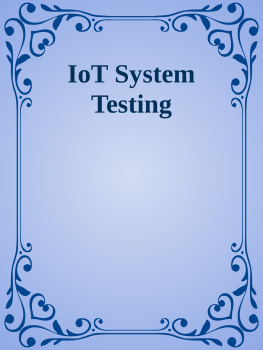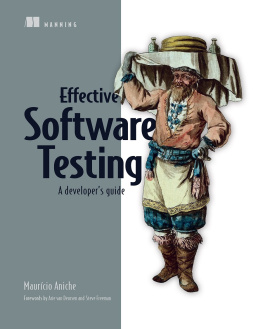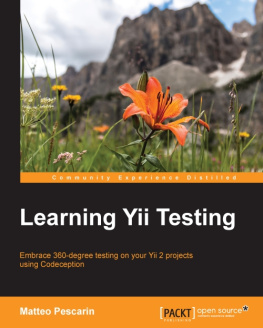Kaner Cem - The domain testing workbook
Here you can read online Kaner Cem - The domain testing workbook full text of the book (entire story) in english for free. Download pdf and epub, get meaning, cover and reviews about this ebook. City: Danvers, MA, year: 2013, publisher: Context Driven Press, genre: Computer. Description of the work, (preface) as well as reviews are available. Best literature library LitArk.com created for fans of good reading and offers a wide selection of genres:
Romance novel
Science fiction
Adventure
Detective
Science
History
Home and family
Prose
Art
Politics
Computer
Non-fiction
Religion
Business
Children
Humor
Choose a favorite category and find really read worthwhile books. Enjoy immersion in the world of imagination, feel the emotions of the characters or learn something new for yourself, make an fascinating discovery.
- Book:The domain testing workbook
- Author:
- Publisher:Context Driven Press
- Genre:
- Year:2013
- City:Danvers, MA
- Rating:4 / 5
- Favourites:Add to favourites
- Your mark:
The domain testing workbook: summary, description and annotation
We offer to read an annotation, description, summary or preface (depends on what the author of the book "The domain testing workbook" wrote himself). If you haven't found the necessary information about the book — write in the comments, we will try to find it.
Domain testing is the most widely taught technique in software testing. However, many of the presentations stick with examples that are too simple to provide a strong basis for applying the technique. Others focus on mathematical models or analysis of the programs source code. The Domain Testing Workbook will help you develop deep skill with this technique whether or not you have access to source code or an abiding interest in mathematics.
The Domain Testing Workbook provides a schema to organize domain testing and test design, with dozens of practical problems and sample analyses. Readers can try their hand at applying the schema and compare their analyses against over 200 pages of worked examples.
You will learn:
- when and how to use domain testing;
- how to apply a risk-focused approach with domain testing;
- how to use domain testing within a broader testing strategy; and
- how to use domain testing in an exploratory way.
This book is for:
- Software testers who want to develop expertise in the fields most popular test technique
- Test managers who want to assess and improve their staffs skills
- Trainers and professors interested in adding depth and skill-based learning to black box testing or test design classes.
Cem Kaner, J.D., Ph.D., is Professor of Software Engineering at the Florida Institute of Technology. Dr. Kaner is senior author of Testing Computer Software, Lessons Learned in Software Testing and Bad Software. The ACMs Special Interest Group for Computers and Society presented him with the Making a Difference Award in 2009 and the Software Test Professionals presented him with the Software Test Luminary Award in 2012. Kaner was a founder of the Association for Software Testing. He is lead developer of the BBST (Black Box Software Testing) courses and courseware.
Sowmya Padmanabhan, M.Sc., currently works at Google as a Program Manager. Before that she worked in Program Management and Software Development/Test at Microsoft and at Texas Instruments. She has a Masters degree in Computer Sciences with a specialization in Software Testing. Sowmyas thesis involved extensive research in training new testers to do skilled Domain Testing.
Douglas Hoffman, M.S.E.E., M.B.A, is an independent management consultant with Software Quality Methods, LLC. He is a Fellow of the American Society for Quality. He has authored numerous papers and is a contributing author of Experiences of Test Automation. He has taught several courses on software testing and test automation for the University of Californias Extension campuses. He has served as President of the Association for Software Testing and of the Silicon Valley Software Quality Association and as Section Chair of the Silicon Valley Section of ASQ.
Kaner Cem: author's other books
Who wrote The domain testing workbook? Find out the surname, the name of the author of the book and a list of all author's works by series.


